What My Focus On Nature Workshops in Iceland Are Like
Stay tuned for highlights of this week’s workshop.
Reserve your space in my 2011 Iceland workshop here.
Find out about my digital photography workshops here.
Stay tuned for highlights of this week’s workshop.
Reserve your space in my 2011 Iceland workshop here.
Find out about my digital photography workshops here.
I’m leading a Focus on Nature workshop in Iceland this week.
Destinations include Jokullsarlon (glacial lagoon), hiking on glaciers, behind the glaciers north and south routes, gray and blue lagoon.
We’ll share images and experiences along the way.
Posts will be sporadic until later in the week.
Reserve your space in my 2011 Iceland workshop here.
Find out about my digital photography workshops here.
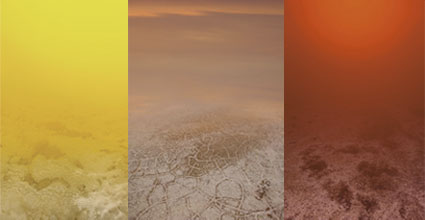
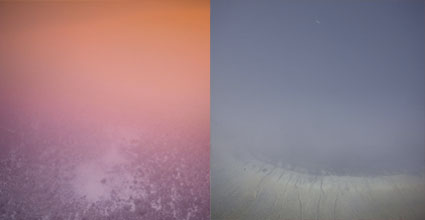
Here’s an interesting sampling of images from my upcoming exhibit – New Work 2010.
All of the source images for the ground in these composites are drawn from Iceland.
While the body of work (Reflection) isn’t site specific, it’s interesting to note that many of the images are drawn from similar locations. In the case of the ground exposures a majority of the sources came from Iceland, Utah, and California.
When successful work becomes more site specific like this I ask “What was it about that place that worked so well?” or “What was it about my experience of that place at that time that worked so well?”
Then I plan to return to that location and/or that state of mind.
Find out about my Iceland workshop here.
Preview the book here.
Learn more about my upcoming exhibit here.
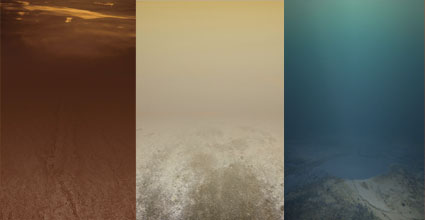
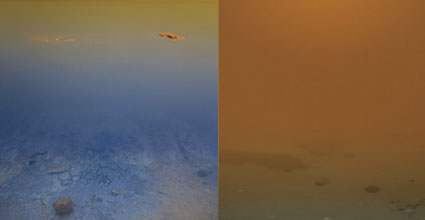
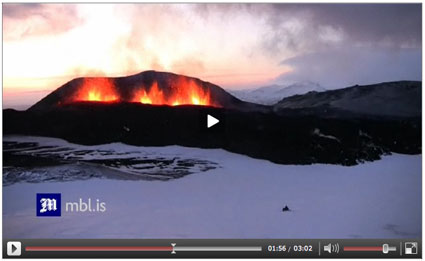
Iceland’s got fantastic eruptions going on right now.
With four active volcanoes ready to blow this could be the beginning of something much larger.
This prelude is dramatic enough.
See video footage here.
Find out about my August Iceland workshop here.
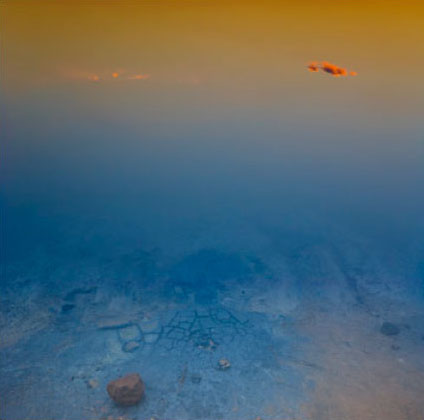
Transparent colors contain a rich clarity that makes them seem charged with light. Incorporating the effect of transparency into your images can produce a luminous impression, even though (typically) the media your images are reproduced on contains no light
While the true effect of transparency cannot be produced without the use of transparent materials, the visual impression of transparency can be produced.
The impression of transparency can be achieved when two sets of color are joined by a third that is perfectly balanced between them. Split the difference between the luminosity, hue, and saturation of the two to arrive at the third.
You can vary the spatial placement of the third color set by making it more similar to one set than another.
Akin to transparency, translucency can also be simulated, by skewing the perfect balance of transparency towards another color (typically a neutral color). Additionally, subtle shifts in luminosity and reductions in contrast may make the effect even more convincing.
Often called color balancing, standard photographic color correction attempts to remove color casts. With a color cast an image seems veiled by color. Removing a color cast makes an image seem clearer, more saturated, and more three-dimensional. Achieving the effect of transparency will too.
Many color strategies employ optical illusions to create or intensify a visual impression. Once you identify and understand these illusions and the color theory behind them, you can put them to work for you too. In addition to enhancing existing color relationships, you can create new ones.
Careful handling of color can enhance the impression of transparency or translucency.
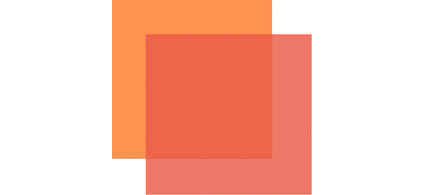
Three colors are selected to create the impression of transparency. The l, h, and s values of the middle color are placed close to the midpoint between the values of the two outside colors
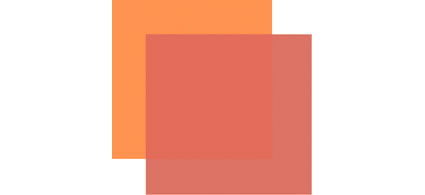
Changing hue towards one color shifts spatial orientation.
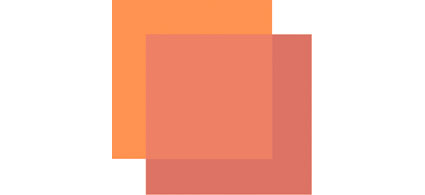
Changing luminosity shifts spatial orientation and creates effect of translucency.
Try this Exercise.
Choose three colors and orient them so that the middle color appears to be transparent. Ideally, select a middle color that produces an additional optical illusion where each total shape (1+2 and 2+3) can be seen as lying either on top or below.
Because it’s difficult to separate other forms of image content from color, color exercises are best performed abstractly. While it’s useful to check numerical values for colors and color relationships, because these exercises are perceptual (often incorporating physiological and psychological responses that are not physically measurable), determine your answers visually. Train and trust your eye.
Read more Color Theory.
Learn more in my digital photography and digital printing workshops.
Iceland’s Focus On Nature workshops unique photographic experiences.
Watch highlights of my 2009 Iceland workshop in this video.
See the images participants made here.
Sign up for my 2010 Iceland workshop here.
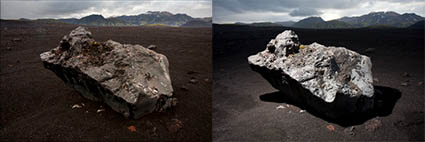
Using strobes on location gives you the ability to dramatically modify light – even on location at midday.
Check out Focus on Nature workshops.
Get priority status in my 2010 Iceland workshop.
Email info@johnpaulcaponigro.com.
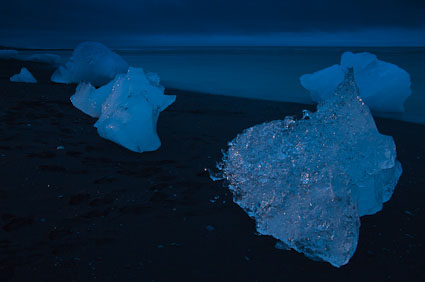
1 Without strobes.
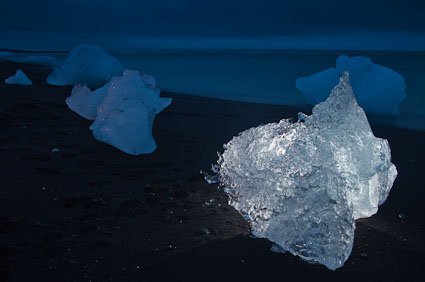
2 With strobes.
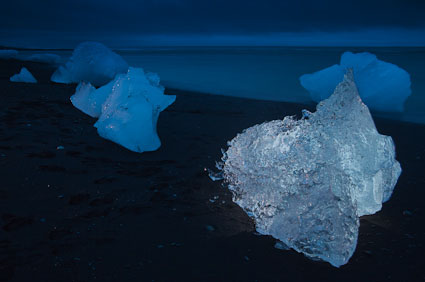
3 Exposures with and without strobes layered together.
I’ve always wanted to know more about artificial lighting. I figured I might use it in studio. I never figured I’d use it on location. That changed when Raganar th Sigurdsson (Arctic Images) broke out his strobes at midnight at Iceland’s Jokullsarlon glacial lagoon. Using strobes and flashlights, we were working light in a very direct way. As a result, I started thinking about light in new ways. Now I’m sure I will use strobes on location. It’s going to take more experimentation for me to know when. I recommend you experiment with light in your photography too. At the very least, your experiments will lead to an increased appreciation of it.
Check out Focus on Nature workshops.
Get priority status in my 2010 Iceland workshop.
Email info@johnpaulcaponigro.com.
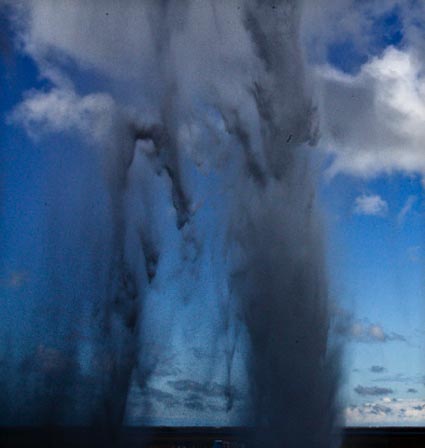
You can walk behind Selljalandsfoss waterfall in Iceland and get a totally different view.
How many times do you find the most unusual angle yields the best shot?
I recommend finding as many angles as possible for any subject.
It’s visual exploration that’s worth the investment.
Get priority status in my 2010 Iceland workshop.
Email info@johnpaulcaponigro.com.